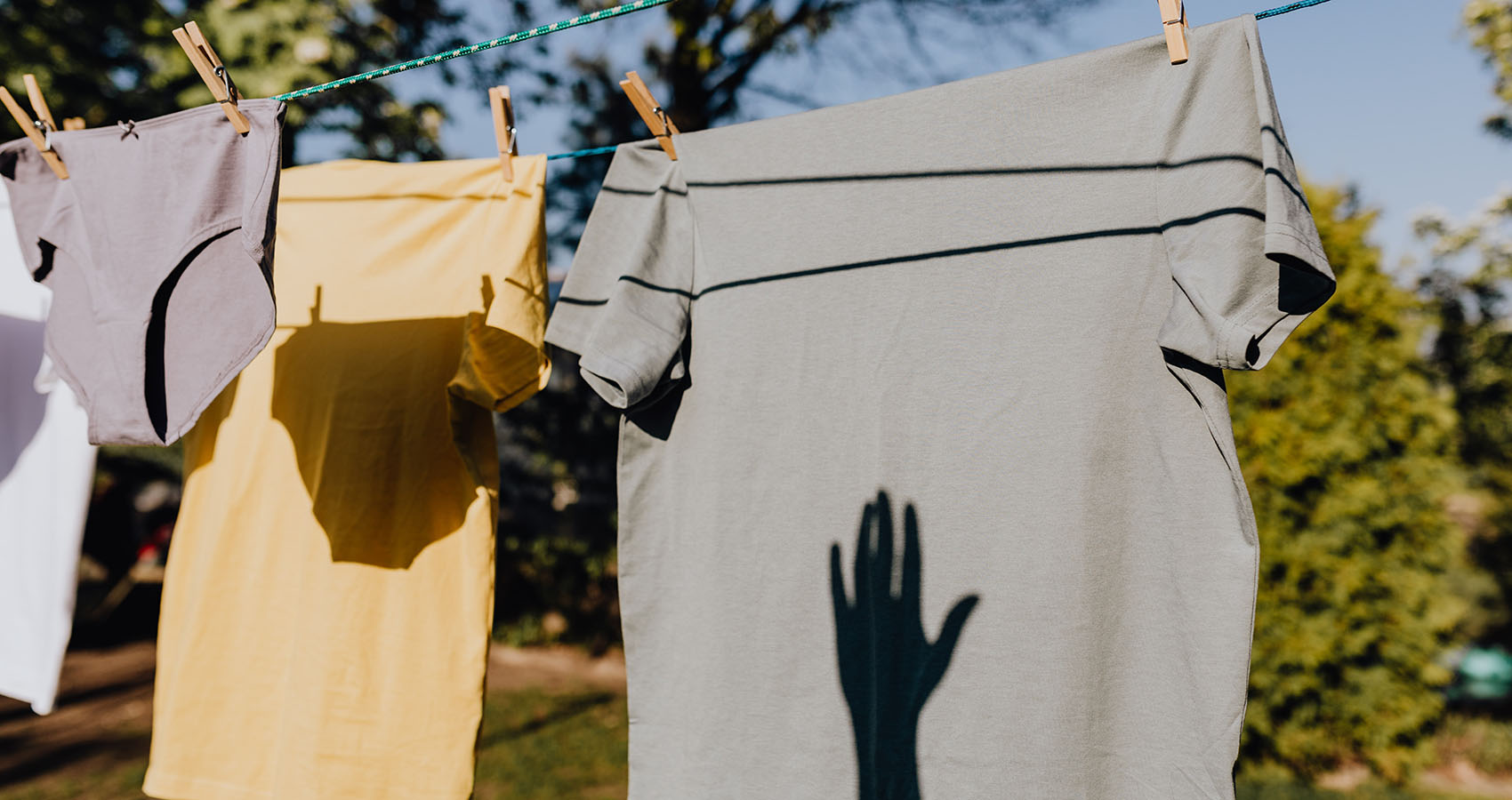
How to Make Clothes Last Longer: Expert Tips and Tricks
Tips and techniques to extend the life of your clothes.
Clothing is an essential part of our daily lives, and we all want our clothes to last as long as possible. With the fast pace of fashion trends, it can be tempting to constantly buy new clothes, but this is not only expensive but also bad for the environment. The good news is that there are simple steps you can take to make your clothes last longer.
One of the most important things you can do to extend the life of your clothes is to properly care for them. This means following the care instructions on the label, washing them in the right temperature, and avoiding harsh chemicals. It's also important to store your clothes properly, hanging them up or folding them neatly to avoid wrinkles and damage. Investing in a student storage solution, such as shelving, garment racks, and storage cubes, can help protect your clothing from damage and save you time.
Another way to make your clothes last longer is to invest in high-quality pieces that are made to last. While these items may be more expensive upfront, they will save you money in the long run by not needing to be replaced as often. Additionally, choosing classic styles that are not tied to a specific trend will ensure that you can wear them for years to come.
-
Understanding Fabric Types
-
Proper Washing Techniques
-
Drying Methods
-
Ironing Tips
-
Proper Storage
Understanding Fabric Types
When it comes to making clothes last longer, understanding the different types of fabrics is crucial. Different fabrics have different properties and require different care to maintain their quality and durability.
Cotton is a popular fabric that is comfortable and easy to care for. It is breathable and absorbs moisture, making it ideal for summer wear. However, cotton can shrink and wrinkle easily, so it is important to follow the care instructions on the label.
Wool is a durable and warm fabric that is often used for winter clothing. It is naturally insulating and moisture-wicking, but it can be prone to shrinking and felting if not cared for properly. Wool should be hand washed or dry cleaned to maintain its shape and texture. For instance, if you live in Tampa, you can find reputable dry cleaners in Tampa that specialize in caring for wool items.
Synthetic fabrics like polyester and nylon are often used in activewear and outdoor clothing. They are lightweight and quick-drying, but they can also be prone to pilling and static cling. It is important to avoid high heat when washing and drying synthetic fabrics to prevent damage.
Silk is a luxurious and delicate fabric that requires special care. It is lightweight and breathable, but it can be easily damaged by water and sunlight. Silk should be hand washed or dry cleaned, and it should be stored in a cool, dark place to prevent fading.
By understanding the properties and care needs of different fabrics, you can ensure that your clothes last longer and maintain their quality and durability.

Proper Washing Techniques
Proper washing techniques are essential to make clothes last longer. Here are some tips to keep in mind:
-
Sort clothes based on color and fabric type before washing. This will prevent color bleeding and damage to delicate fabrics.
-
Read the care label on the clothes to determine the appropriate washing temperature, cycle, and detergent type.
-
Use a gentle detergent and avoid using too much. Excess detergent can leave residue on clothes and damage the fibers.
-
Wash clothes in cold water whenever possible. Hot water can cause shrinkage and damage to certain fabrics.
-
Use the gentle cycle for delicate fabrics and items with embellishments. The normal cycle can be harsh on these items.
-
Avoid using fabric softeners and dryer sheets. They can leave residue on clothes and damage the fibers.
-
Hang dry clothes whenever possible. The dryer can cause shrinkage and damage to certain fabrics. If using a dryer, use the lowest heat setting possible.
By following these proper washing techniques, clothes can last longer and maintain their quality and appearance.
Drying Methods
When it comes to making clothes last longer, drying them properly is just as important as washing them. Here are some tips on how to dry your clothes to extend their lifespan:
-
Air Drying: This is the gentlest way to dry clothes. Simply hang them up on a clothesline or drying rack, and let them air dry. This method is especially good for delicate fabrics like silk or wool, which can shrink or become misshapen in the dryer. It's also a great way to save energy and money on your electricity bill.
-
Tumble Drying: If you must use a dryer, choose a low or medium heat setting and remove the clothes as soon as they're dry. Over-drying can cause clothes to shrink, fade, and wear out faster. Avoid using dryer sheets, which can leave a residue on clothes and reduce their absorbency.
-
Flat Drying: This method is best for clothes that are prone to stretching or losing their shape in the dryer, such as sweaters or knitwear. Lay the clothes flat on a clean, dry surface and reshape them as necessary. Avoid hanging heavy clothes like jeans or jackets to dry, as this can cause them to stretch out of shape.
-
Ironing: Ironing clothes can help them look better and last longer. It smooths out wrinkles and creases, which can weaken the fibers over time. Use a low or medium heat setting and iron clothes when they're slightly damp to avoid scorching or burning them.
By following these simple drying methods, you can help your clothes last longer and look better.

Ironing Tips
Ironing is a crucial step in keeping clothes looking neat and professional. Here are some tips to make sure your ironing is done properly and safely:
-
Always read the care label on the garment before ironing. Some fabrics can be damaged by high heat, so it's important to know what temperature to set your iron to.
-
Use distilled water in your iron to prevent mineral buildup that can clog the steam vents and damage the iron over time.
-
Iron clothes inside out to prevent shiny patches from forming on the fabric.
-
Use a pressing cloth when ironing delicate fabrics like silk or wool to prevent scorch marks or damage to the fabric.
-
Never leave the iron unattended while it's turned on. Always turn it off and unplug it when you're finished using it.
-
Store the iron in a cool, dry place to prevent rusting and other damage.
By following these simple tips, you can ensure that your clothes are properly ironed and will last longer.
Proper Storage
Proper storage is crucial to make clothes last longer. Here are some tips to keep in mind:
-
Cleanliness: Before storing clothes, make sure they are clean and dry. Any dirt, sweat, or stains left on the fabric can attract insects and cause damage over time.
-
Hangers: Use appropriate hangers for different types of clothes. For example, padded hangers are ideal for delicate fabrics like silk and satin, while wooden hangers are great for heavy coats and jackets. Avoid using wire hangers as they can leave creases and damage the fabric.
-
Folding: For clothes that should not be hung, such as knitwear and t-shirts, folding is the best option. However, make sure to fold them properly to avoid creases and wrinkles. Use acid-free tissue paper to separate layers and prevent color transfer.
-
Storage Containers: Use storage containers made of breathable materials like cotton or linen. Avoid plastic bags or containers as they trap moisture and can cause mildew and mold growth.
-
Location: Store clothes in a cool, dry, and dark place away from direct sunlight. Exposure to sunlight can cause fabric to fade and weaken over time.
By following these simple storage tips, clothes can last longer and maintain their quality and appearance for years to come.












